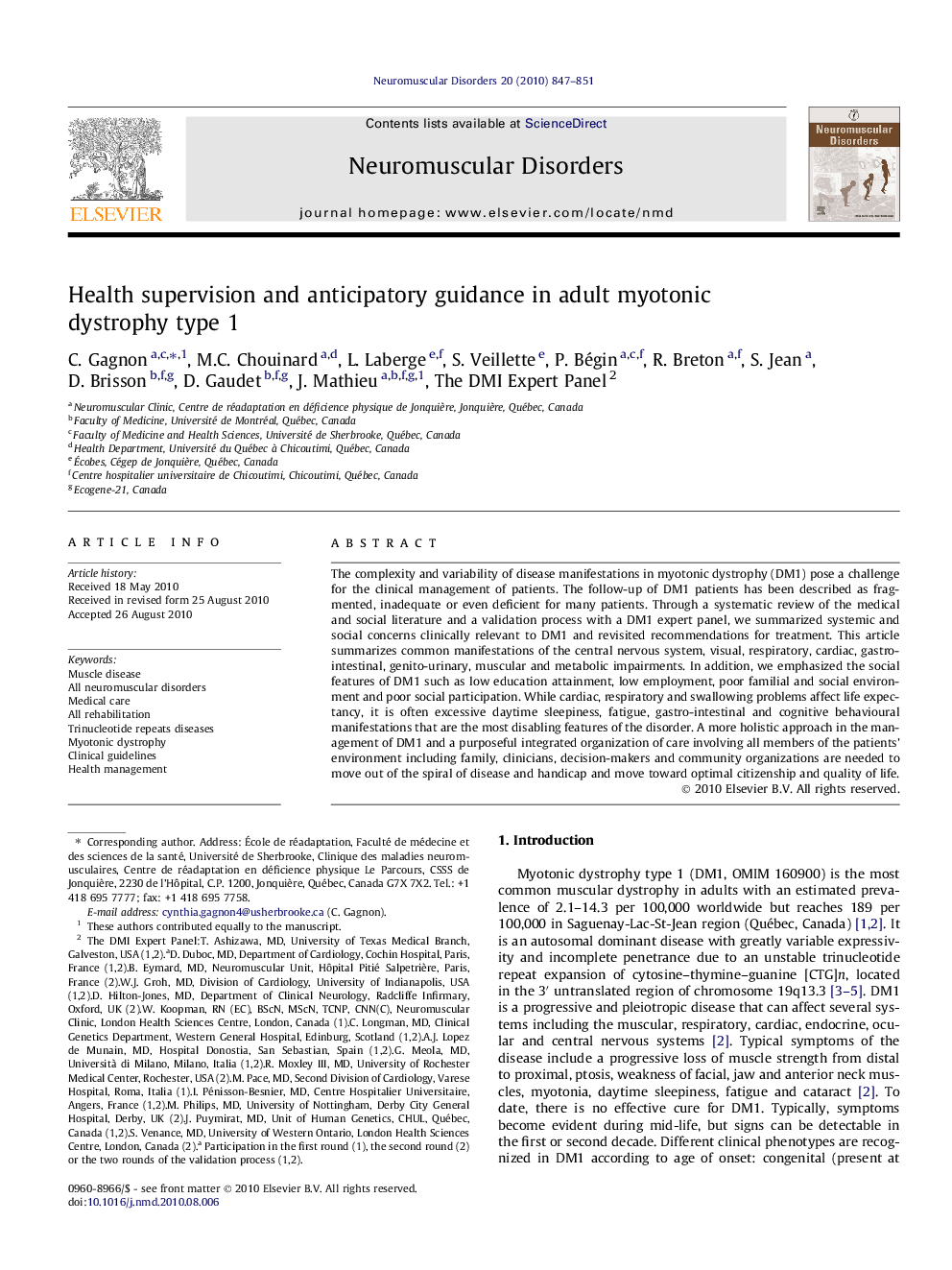| Article ID | Journal | Published Year | Pages | File Type |
|---|---|---|---|---|
| 3080126 | Neuromuscular Disorders | 2010 | 5 Pages |
The complexity and variability of disease manifestations in myotonic dystrophy (DM1) pose a challenge for the clinical management of patients. The follow-up of DM1 patients has been described as fragmented, inadequate or even deficient for many patients. Through a systematic review of the medical and social literature and a validation process with a DM1 expert panel, we summarized systemic and social concerns clinically relevant to DM1 and revisited recommendations for treatment. This article summarizes common manifestations of the central nervous system, visual, respiratory, cardiac, gastro-intestinal, genito-urinary, muscular and metabolic impairments. In addition, we emphasized the social features of DM1 such as low education attainment, low employment, poor familial and social environment and poor social participation. While cardiac, respiratory and swallowing problems affect life expectancy, it is often excessive daytime sleepiness, fatigue, gastro-intestinal and cognitive behavioural manifestations that are the most disabling features of the disorder. A more holistic approach in the management of DM1 and a purposeful integrated organization of care involving all members of the patients’ environment including family, clinicians, decision-makers and community organizations are needed to move out of the spiral of disease and handicap and move toward optimal citizenship and quality of life.
